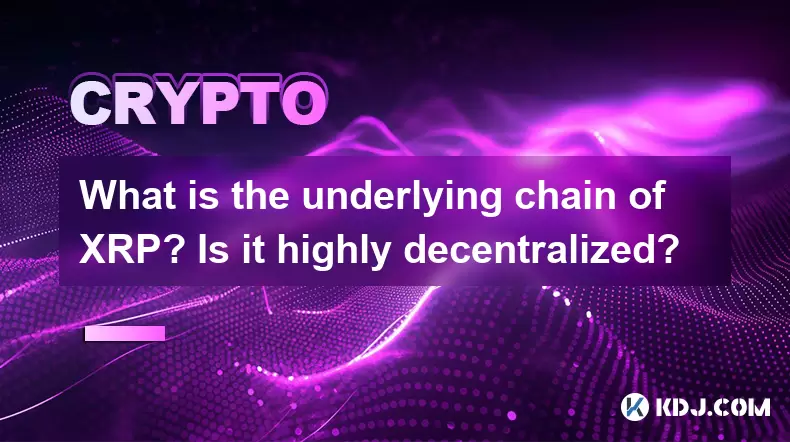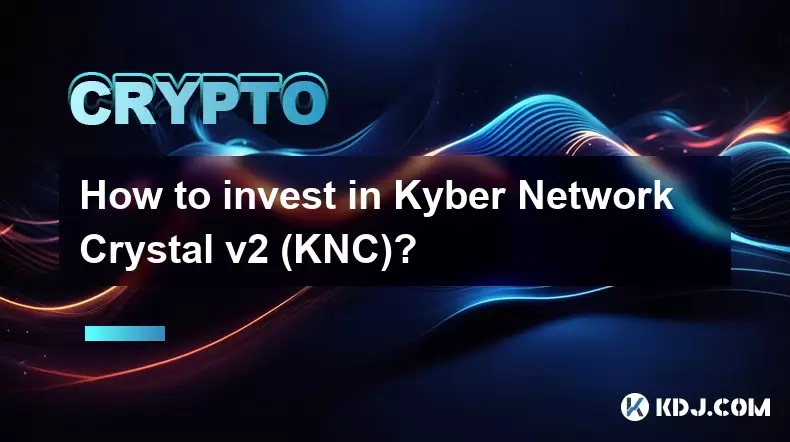-
 Bitcoin
Bitcoin $118300
-3.52% -
 Ethereum
Ethereum $4554
-3.81% -
 XRP
XRP $3.090
-5.78% -
 Tether USDt
Tether USDt $1.000
0.04% -
 BNB
BNB $842.0
-0.27% -
 Solana
Solana $194.6
-3.24% -
 USDC
USDC $0.9998
0.00% -
 TRON
TRON $0.3600
-0.20% -
 Dogecoin
Dogecoin $0.2243
-7.95% -
 Cardano
Cardano $0.9066
2.57% -
 Hyperliquid
Hyperliquid $45.89
-4.06% -
 Chainlink
Chainlink $22.49
-5.34% -
 Stellar
Stellar $0.4261
-6.01% -
 Sui
Sui $3.753
-5.87% -
 Bitcoin Cash
Bitcoin Cash $592.1
-3.33% -
 Ethena USDe
Ethena USDe $1.001
-0.01% -
 Hedera
Hedera $0.2502
-5.51% -
 Avalanche
Avalanche $23.71
-6.22% -
 Litecoin
Litecoin $121.8
-6.36% -
 Toncoin
Toncoin $3.416
-2.58% -
 UNUS SED LEO
UNUS SED LEO $9.323
0.85% -
 Shiba Inu
Shiba Inu $0.00001291
-6.93% -
 Uniswap
Uniswap $10.91
-9.13% -
 Polkadot
Polkadot $4.010
-5.38% -
 OKB
OKB $93.46
-9.08% -
 Dai
Dai $0.9999
0.00% -
 Bitget Token
Bitget Token $4.559
-4.99% -
 Cronos
Cronos $0.1545
-6.93% -
 Ethena
Ethena $0.7362
-5.51% -
 Aave
Aave $311.6
-4.32%
What is the underlying chain of XRP? Is it highly decentralized?
The XRP Ledger uses a unique consensus protocol, managed by validators, to facilitate fast and efficient cross-border payments, distinct from traditional blockchain technology.
May 12, 2025 at 03:28 pm

The underlying chain of XRP is the XRP Ledger. This distributed ledger technology is designed to facilitate fast and efficient cross-border payments. The XRP Ledger is unique in that it does not rely on traditional blockchain technology but instead uses a consensus protocol to validate transactions. This protocol is managed by a network of servers, known as validators, which come to an agreement on the order and outcome of transactions.
How the XRP Ledger Works
The XRP Ledger operates on a consensus mechanism that is different from the proof-of-work or proof-of-stake systems used by many other cryptocurrencies. Instead, it uses the Ripple Protocol consensus algorithm. In this system, a set of trusted validators agrees on the state of the ledger. Each validator proposes a set of transactions, and if a supermajority (typically 80%) of validators agree on the set of transactions, they are considered valid and added to the ledger. This process ensures that the ledger remains consistent across all nodes in the network.
Decentralization of the XRP Ledger
The question of whether the XRP Ledger is highly decentralized is a complex one. Decentralization can be measured in various ways, including the distribution of validators, the control over the protocol, and the governance of the network. The XRP Ledger is operated by a network of validators, which can be run by anyone. However, a significant number of these validators are operated by Ripple Labs, the company behind XRP, and its partners. This has led to debates about the extent of decentralization in the XRP Ledger.
Validators and Their Role
Validators play a crucial role in the XRP Ledger. They are responsible for proposing and validating transactions. Anyone can set up a validator, but becoming a trusted validator requires other nodes in the network to include you in their Unique Node List (UNL). The UNL is a list of validators that a node trusts to help it reach consensus. While the system allows for a high degree of openness, the influence of Ripple Labs and its partners in the validator ecosystem raises questions about the true level of decentralization.
Governance and Control
The governance of the XRP Ledger is another aspect that influences its decentralization. Ripple Labs has a significant role in the development and maintenance of the protocol. They propose amendments to the protocol, which are then voted on by validators. If a supermajority of validators agree, the amendment is implemented. This process gives Ripple Labs a degree of control over the direction of the ledger, although the final decision rests with the validators.
Security and Performance
The XRP Ledger is designed to be highly secure and efficient. Its consensus mechanism allows for fast transaction processing, with transactions typically settling in 3-5 seconds. The ledger also supports a high transaction throughput, making it suitable for applications like cross-border payments. The security of the ledger is maintained through the consensus process, which ensures that only valid transactions are added to the ledger.
Practical Use of XRP Ledger
Using the XRP Ledger involves interacting with its network through wallets and applications that support XRP. Here is a step-by-step guide on how to send XRP using a standard wallet:
- Download and Install a Wallet: Choose a wallet that supports XRP, such as the official Ripple wallet or a third-party wallet like Toast Wallet. Download and install the wallet on your device.
- Create a New Account: Open the wallet and follow the prompts to create a new account. You will need to generate a new XRP address and a secret key, which you should keep secure.
- Fund Your Account: To send XRP, you need to have XRP in your account. You can purchase XRP from a cryptocurrency exchange and transfer it to your wallet address.
- Send XRP: Once your account is funded, you can send XRP. Enter the recipient's XRP address and the amount you want to send. Review the transaction details and confirm the transaction. The transaction will be broadcast to the XRP Ledger and processed by validators.
- Confirm Transaction: After the transaction is confirmed by the network, it will appear in your transaction history. You can check the status of the transaction on the XRP Ledger explorer.
Transparency and Openness
The XRP Ledger is an open-source project, which means that anyone can view and contribute to its codebase. This transparency is a positive aspect of the ledger, as it allows for community involvement and scrutiny. However, the influence of Ripple Labs in the development and governance of the ledger means that the degree of openness can be debated.
Community and Adoption
The XRP Ledger has a vibrant community of developers, users, and businesses that are working to expand its use cases. Many financial institutions and payment providers have shown interest in using XRP for cross-border payments, which has helped to drive adoption. The community's involvement in the ledger's development and promotion is a key factor in its growth and sustainability.
Frequently Asked Questions
Q: Can anyone become a validator on the XRP Ledger?
A: Yes, anyone can set up a validator on the XRP Ledger. However, to become a trusted validator, you need to be included in the Unique Node List (UNL) of other nodes, which can be challenging without the support of existing validators.
Q: How does the XRP Ledger handle transaction fees?
A: The XRP Ledger uses a small transaction fee, denominated in XRP, to prevent spam and ensure the integrity of the ledger. The fee is burned, meaning it is removed from circulation, which helps to maintain the scarcity of XRP.
Q: Is the XRP Ledger compatible with other blockchain networks?
A: The XRP Ledger is designed to work independently, but there are projects and initiatives aimed at creating interoperability between the XRP Ledger and other blockchain networks. These efforts are still in development and vary in their level of integration.
Q: What are the main advantages of using the XRP Ledger for cross-border payments?
A: The XRP Ledger offers several advantages for cross-border payments, including fast transaction settlement times, low transaction fees, and high throughput. These features make it an attractive option for financial institutions looking to streamline their payment processes.
Disclaimer:info@kdj.com
The information provided is not trading advice. kdj.com does not assume any responsibility for any investments made based on the information provided in this article. Cryptocurrencies are highly volatile and it is highly recommended that you invest with caution after thorough research!
If you believe that the content used on this website infringes your copyright, please contact us immediately (info@kdj.com) and we will delete it promptly.
- Kazakhstan's Crypto Leap: Bitcoin ETF and Central Asia's Digital Finance Future
- 2025-08-13 12:45:19
- BlockDAG Presale Blazes Past $371M: Fundraising Frenzy Fuels Crypto Sensation
- 2025-08-13 13:05:21
- Meme Coins: Chasing the 2025 Surge – Which Will Moonshot?
- 2025-08-13 10:25:23
- Bitcoin's Wild Ride: Rally, Pullback, and What's Next
- 2025-08-13 10:25:23
- Bitcoin, Bitmax, and Institutional Demand: A New Era of Crypto Investment
- 2025-08-13 10:45:12
- Solana, ROAM, and Airdrops: What's the Buzz in 2025?
- 2025-08-13 11:35:13
Related knowledge

How to purchase Aragon (ANT)?
Aug 09,2025 at 11:56pm
Understanding Aragon (ANT) and Its PurposeAragon (ANT) is a decentralized governance token that powers the Aragon Network, a platform built on the Eth...

Where to trade Band Protocol (BAND)?
Aug 10,2025 at 11:36pm
Understanding the Role of Private Keys in Cryptocurrency WalletsIn the world of cryptocurrency, a private key is one of the most critical components o...

What is the most secure way to buy Ocean Protocol (OCEAN)?
Aug 10,2025 at 01:01pm
Understanding Ocean Protocol (OCEAN) and Its EcosystemOcean Protocol (OCEAN) is a decentralized data exchange platform built on blockchain technology,...

How to invest in Kyber Network Crystal v2 (KNC)?
Aug 12,2025 at 05:21pm
Understanding Kyber Network Crystal v2 (KNC)Kyber Network is a decentralized liquidity hub built on the Ethereum blockchain that enables instant token...

Where can I buy UMA (UMA)?
Aug 07,2025 at 06:42pm
Understanding UMA and Its Role in Decentralized FinanceUMA (Universal Market Access) is an Ethereum-based decentralized finance (DeFi) protocol design...

How to sell my Ren (REN) tokens?
Aug 13,2025 at 11:35am
Understanding REN Tokens and Their Role in Decentralized FinanceREN is an ERC-20 token that powers the Ren protocol, a decentralized interoperability ...

How to purchase Aragon (ANT)?
Aug 09,2025 at 11:56pm
Understanding Aragon (ANT) and Its PurposeAragon (ANT) is a decentralized governance token that powers the Aragon Network, a platform built on the Eth...

Where to trade Band Protocol (BAND)?
Aug 10,2025 at 11:36pm
Understanding the Role of Private Keys in Cryptocurrency WalletsIn the world of cryptocurrency, a private key is one of the most critical components o...

What is the most secure way to buy Ocean Protocol (OCEAN)?
Aug 10,2025 at 01:01pm
Understanding Ocean Protocol (OCEAN) and Its EcosystemOcean Protocol (OCEAN) is a decentralized data exchange platform built on blockchain technology,...

How to invest in Kyber Network Crystal v2 (KNC)?
Aug 12,2025 at 05:21pm
Understanding Kyber Network Crystal v2 (KNC)Kyber Network is a decentralized liquidity hub built on the Ethereum blockchain that enables instant token...

Where can I buy UMA (UMA)?
Aug 07,2025 at 06:42pm
Understanding UMA and Its Role in Decentralized FinanceUMA (Universal Market Access) is an Ethereum-based decentralized finance (DeFi) protocol design...

How to sell my Ren (REN) tokens?
Aug 13,2025 at 11:35am
Understanding REN Tokens and Their Role in Decentralized FinanceREN is an ERC-20 token that powers the Ren protocol, a decentralized interoperability ...
See all articles

























































































